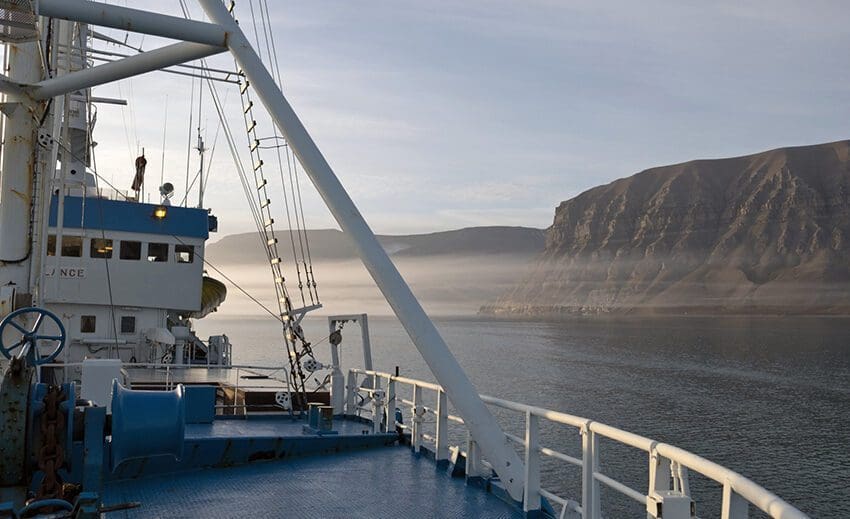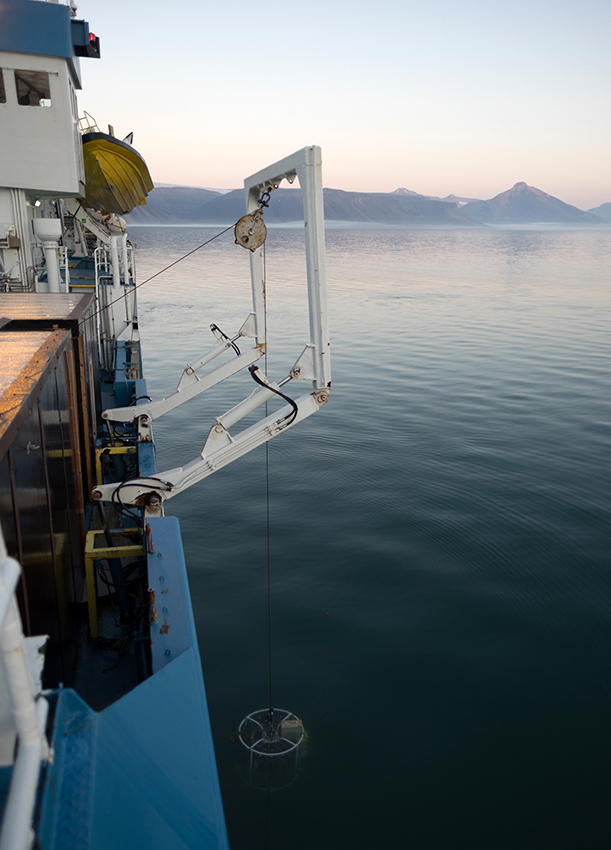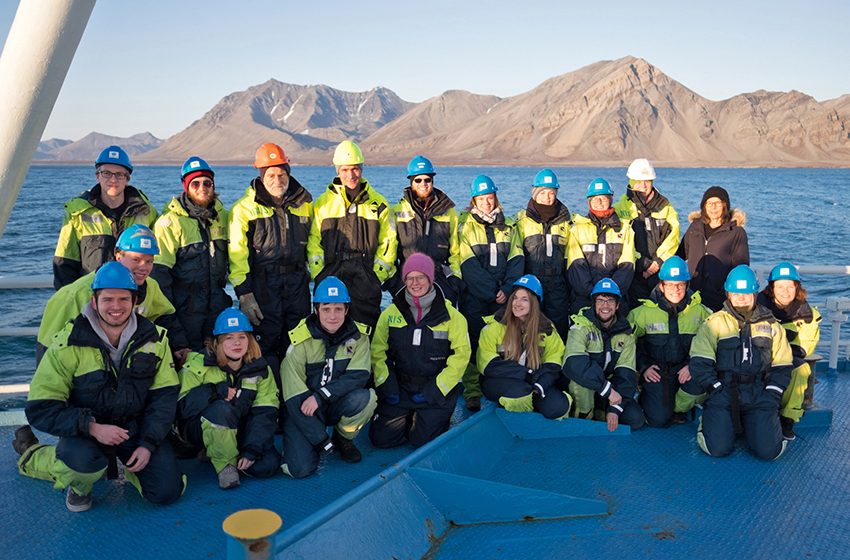Cruising Isfjorden – RV Lance’s last research cruise

RV Lance in Billefjorden, October 2017, during an AGF-214 research cruise. Photo: Inger Lise Næss/UNIS
Top image: RV Lance in Billefjorden, October 2017. Photo: Inger Lise Næss/UNIS
13 students from the course AGF-214 Polar Ocean Climate recently spent a week on board RV Lance together with lecturers, researchers and technicians from UNIS. The research cruise was Lance’s last cruise before she was taken out of the Norwegian Polar Institute’s service.
20 October 2017
Text and photos: Inger Lise Næss
The ship has long experience in the waters around Svalbard. One of the lecturers on the trip, Tor Gammelsrød, also took part in Lance’s very first research cruise back in 1981, as well as numerous others from 1981 up until today. He estimates having spent between 1 and 2 years of his life on board the ship!

Photo: Inger Lise Næss/UNIS
Hard work
The international crew of students from Norway, Germany, Netherlands, Russia and Italy worked shifts with six hours on, six hours off duty throughout the duration of the cruise. Their main task was taking CTDs (see explanation) and water samples from different locations and water depths. A total of 130 CTDs and even more water samples were taken, and the samples were analysed for oxygen, CO₂, nutrients and methane, among other things. In all types of weather – luckily, we had little wind and waves but some of the students still had their brush with seasickness – and in everything from sun to complete darkness the students worked hard at translating theory into practice.
The students come from bachelor programmes at different universities and are spending the autumn semester at UNIS. The research cruise is an essential part of their training. For an oceanographer it is of vital importance to learn how the sampling and instruments on board work, in addition to doing immediate analyses. This practical field training is not common in many universities, since it is both costly and complicated taking students out on research cruises. The universities prefer having their students come to UNIS to get field experience, and every year we welcome around 800 students from all over the world, offering field based courses in Arctic biology, geology, geophysics and technology.
Shared value
The collected data from the cruise are being used both in the students’ semester assignments, by master and PhD students at UNIS, and they are also part of longer time series of data from the area. Every year, CTDs and water samples are taken from the same locations, and for some stations we have time series going back to 1987. Long time series are key in understanding the changes in climate and in sea currents in the Arctic. The data are also valuable to marine biologists studying the ecosystems in the sea as well as researchers from other fields, and the data are also available to scientists wishing access.
An experience for life
After long days and nights at sea a group of tired, but happy students could set foot in Longyearbyen again. This is how they summed up the week: –Breathtaking –One of the best experiences of my life –learned a lot –lots of good food –super cool –amazing –little sleep –many surprises! The UNIS staff was also very pleased both with the students’ efforts and the crew on board Lance, who really provided great service for us. At the moment it is not decided which vessel will be used on next year’s course, but there is no doubt that a new group of students will have a unique field experience, and that we will most likely meet some of them as researchers in Svalbard in a few year’s time.
A big thank you goes out to all students and staff for a great cruise, and last, but not least: Thank you for the dance, old Lance!
This article was first published in Svalbardposten 20.10.17
